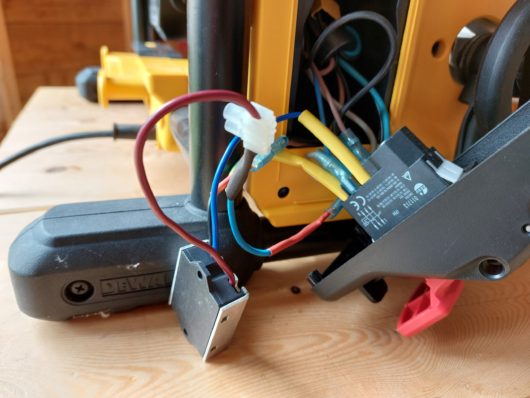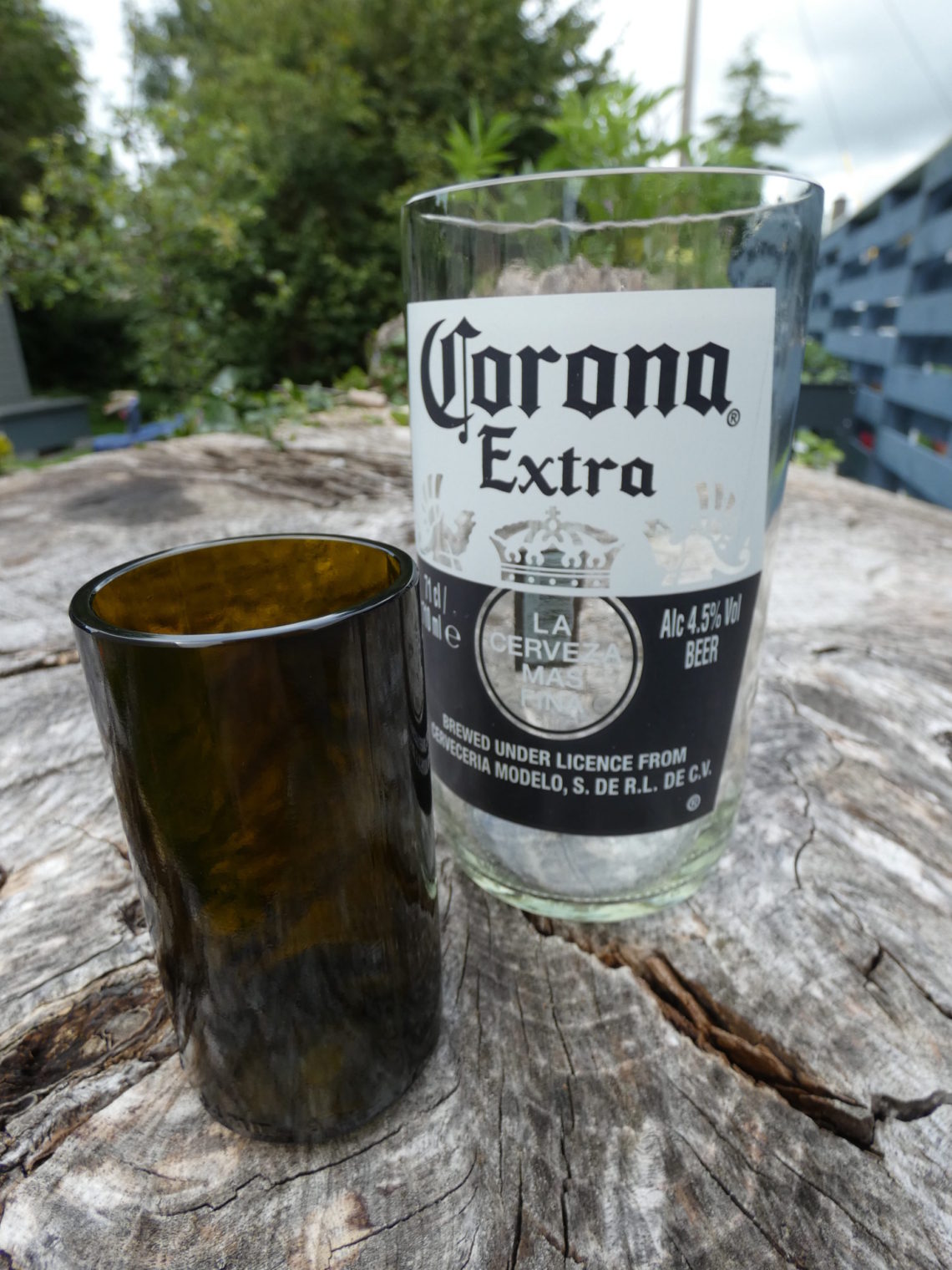
Refreshment glasses
The 710 ml Corona beer bottle and the oil bottle were quite easy to cut and they cracked exactly along the scored lines. After they were cut in half I could say that their walls were uniformly thick and it looked like an easy project. I set up my drill press and started the sanding process, as always using all the grits from 40 to 3000. Of course, I set the drill press at a comfortable height and locked it in that position. I was holding the workpieces in my hands, pressing them against the rotating tools and not the other way around. That was the first time I used my drill press for glass sanding, it had always been a handheld drill fixed to the workbench in the horizontal position.


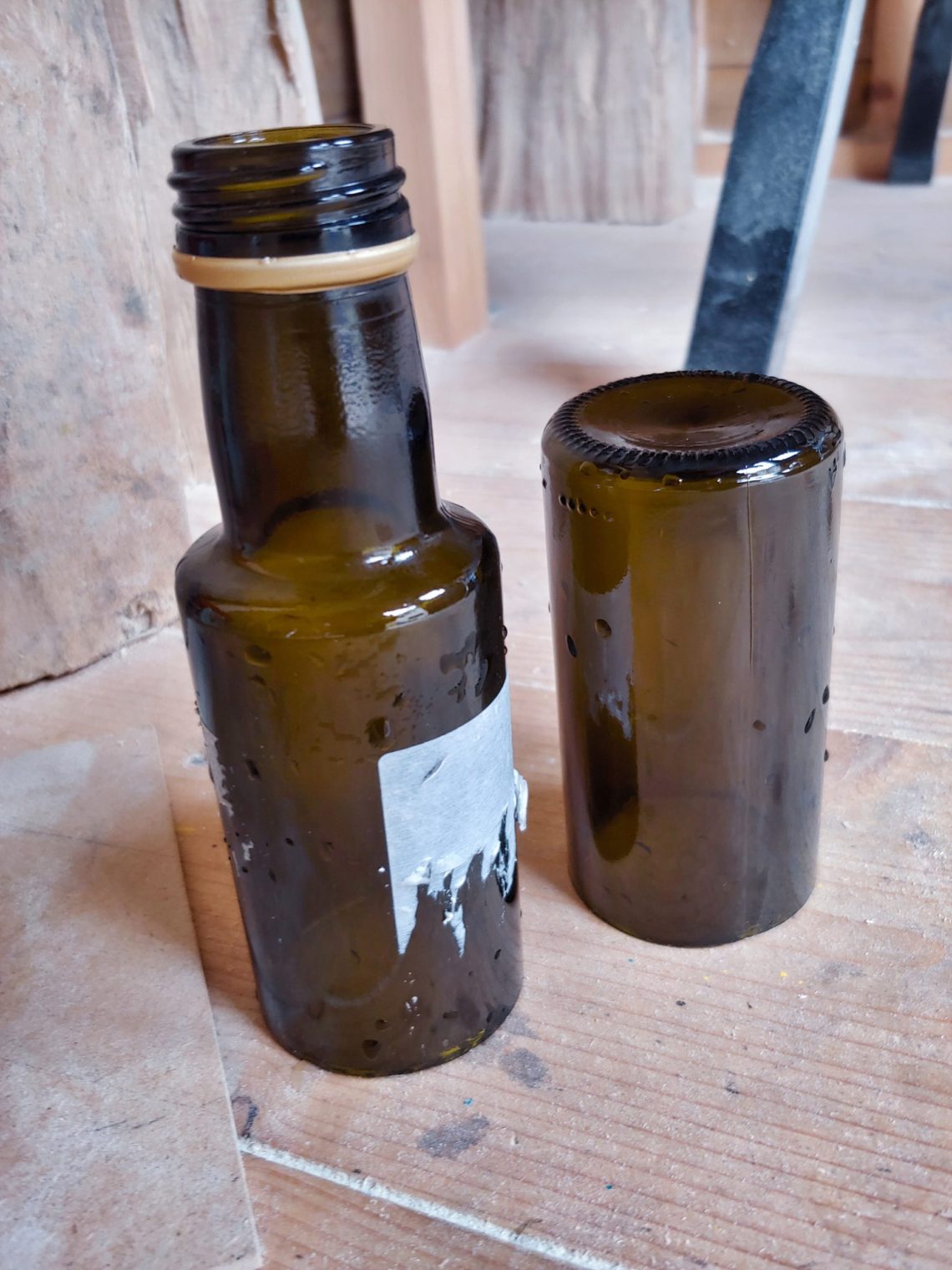


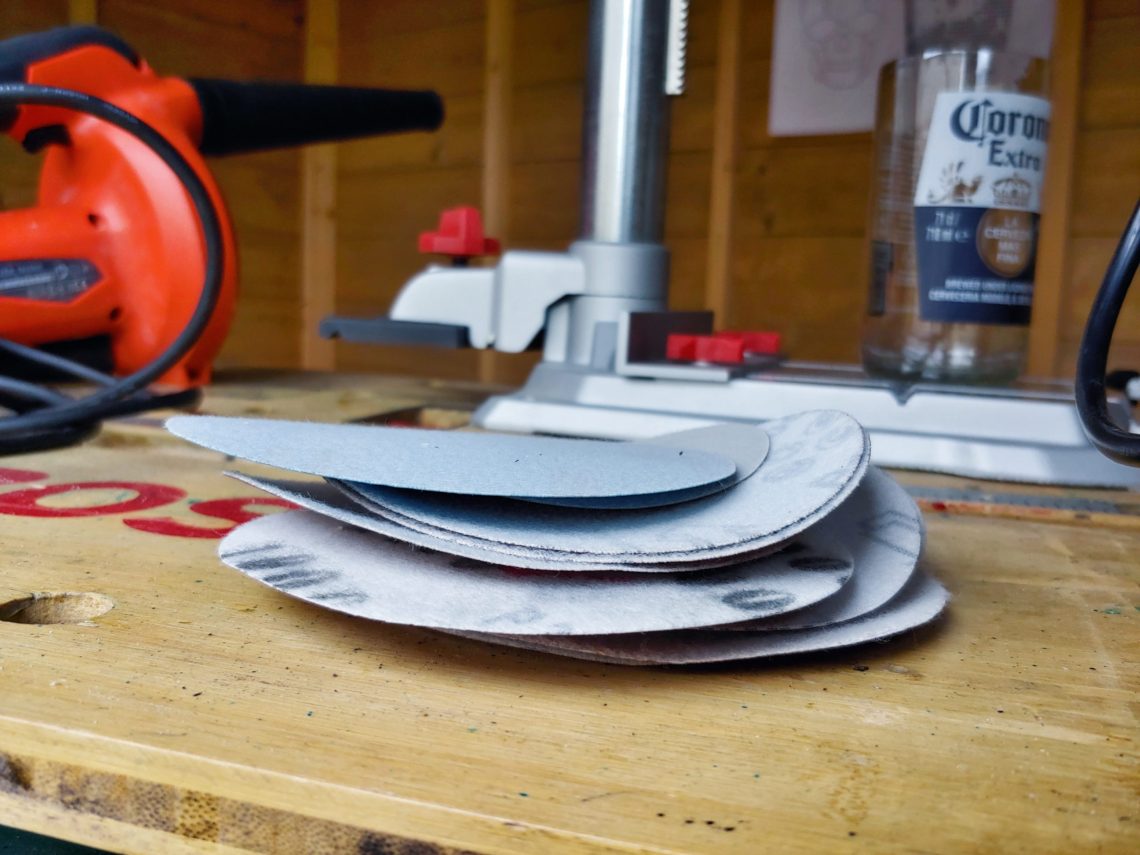
When I installed a 600 grit sanding disc I started to grind a bevel on the outside edge. The progress was quick and I avoided any excessive chipping. Coarse sandpaper used at this point is only damaging the edge and on the other hand, if the grit is too high it’s unnecessarily slowing down the process. It’s thereby very important to choose the right disc at the right time.

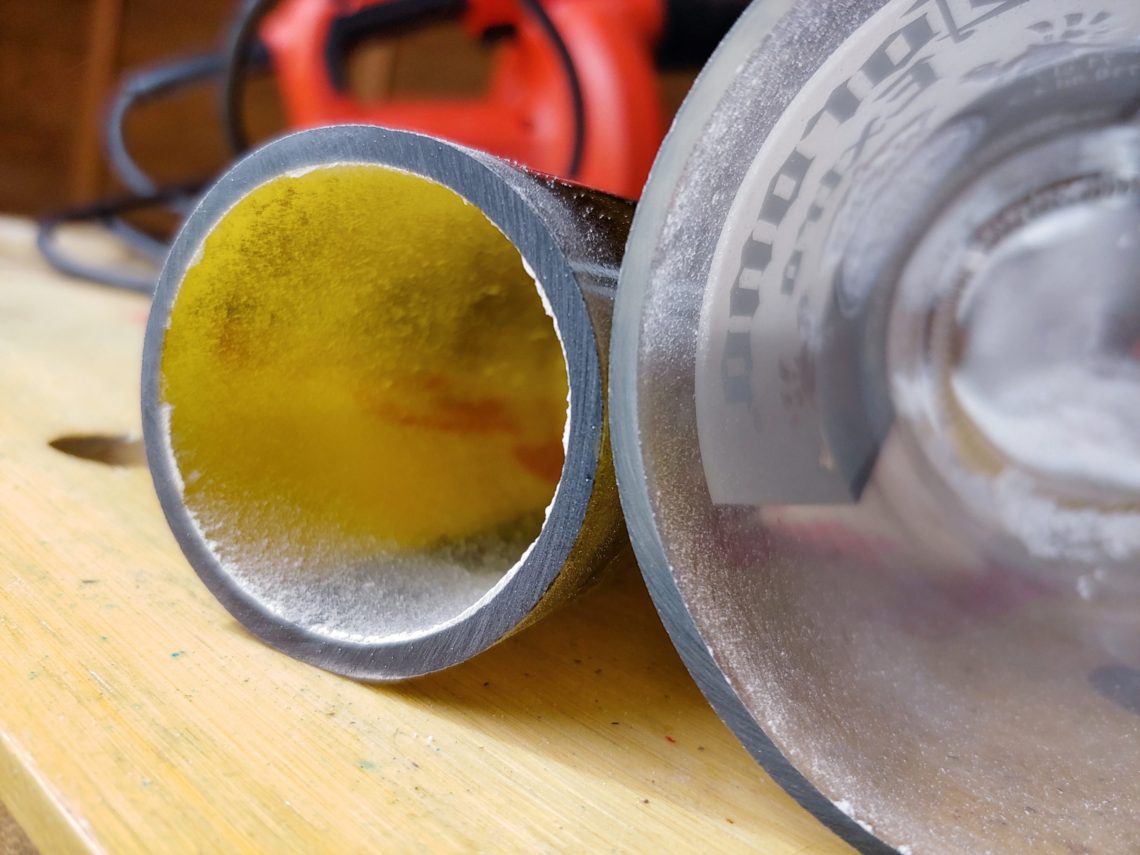
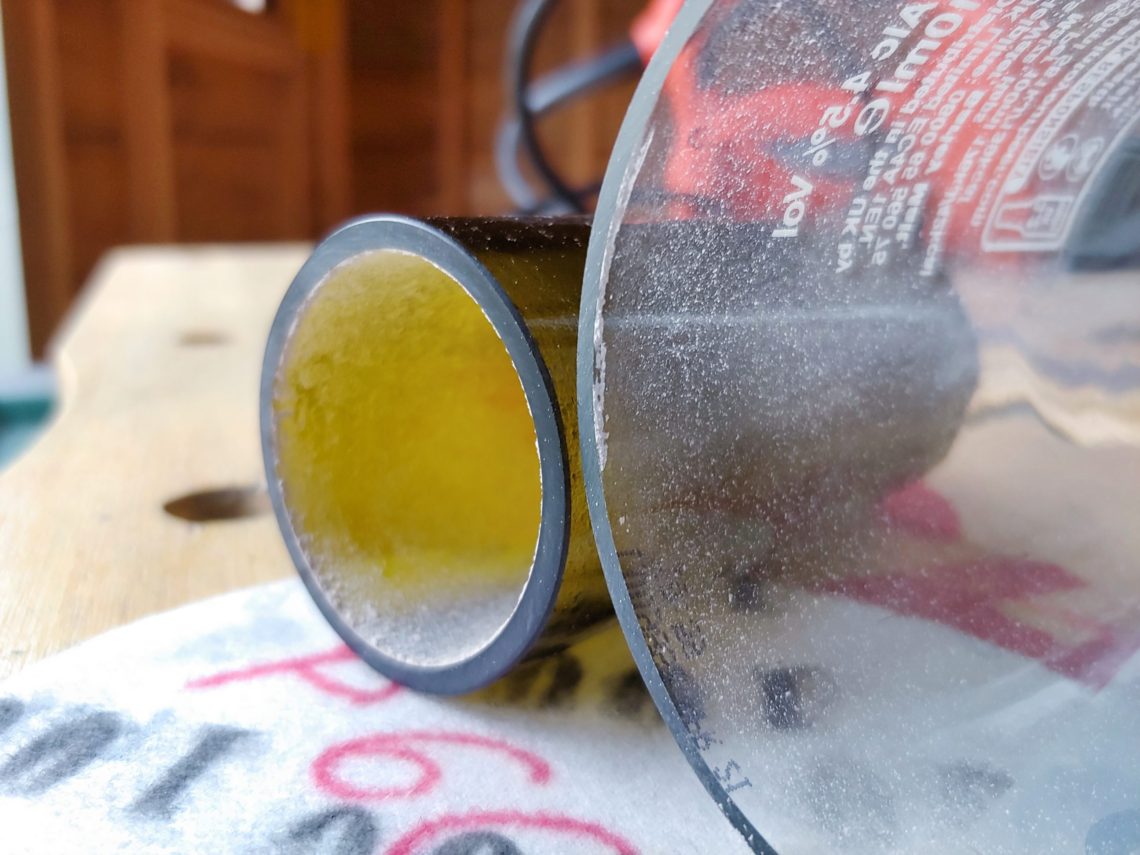
The drill was set to 1100 rpm throughout the process, and all the discs were cleaned with a synthetic wine cork from time to time.

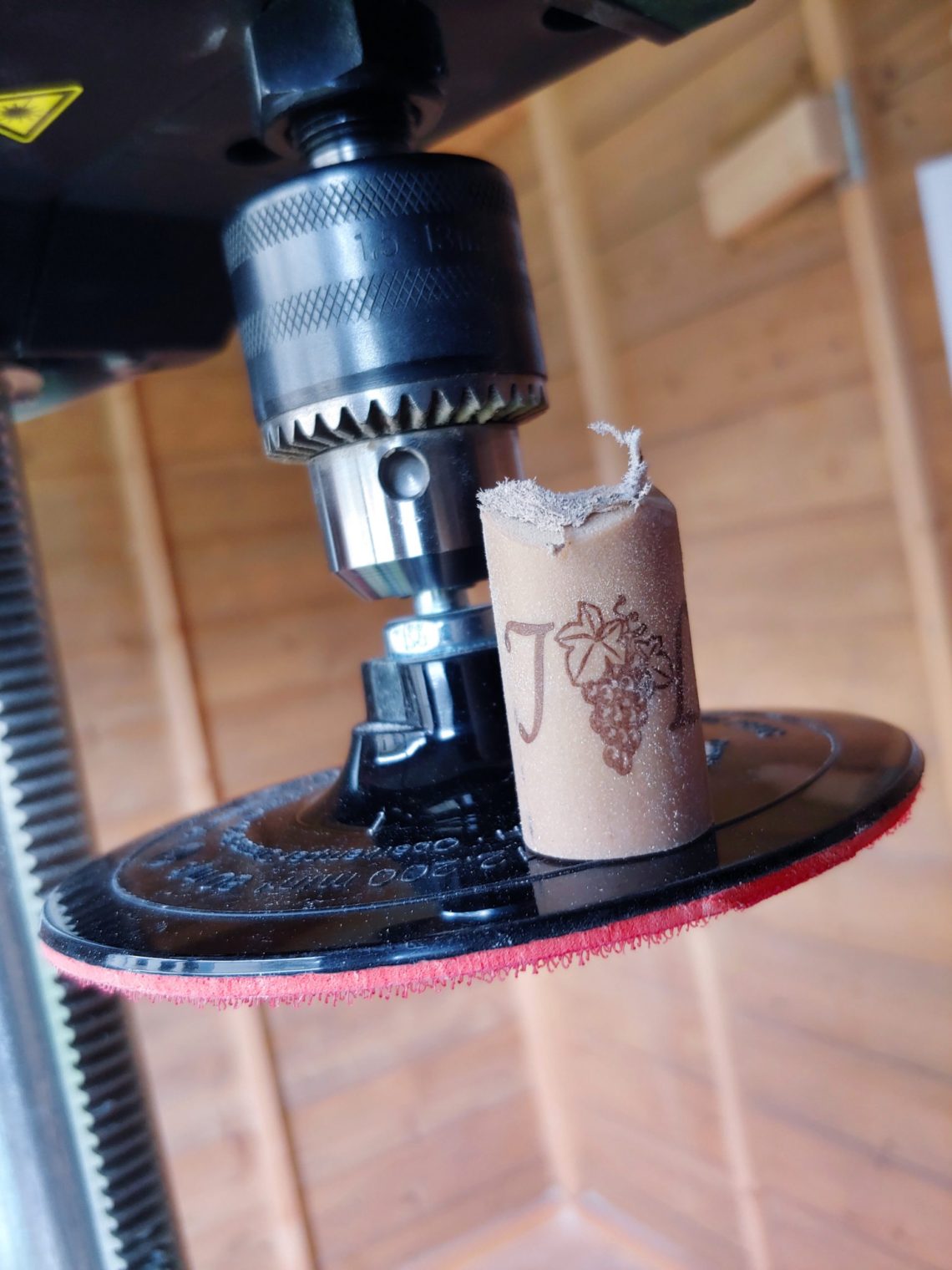
It took more than 1 hour to have them done, but the results were very satisfying. Perfectly smooth on the top with a nice bevel.
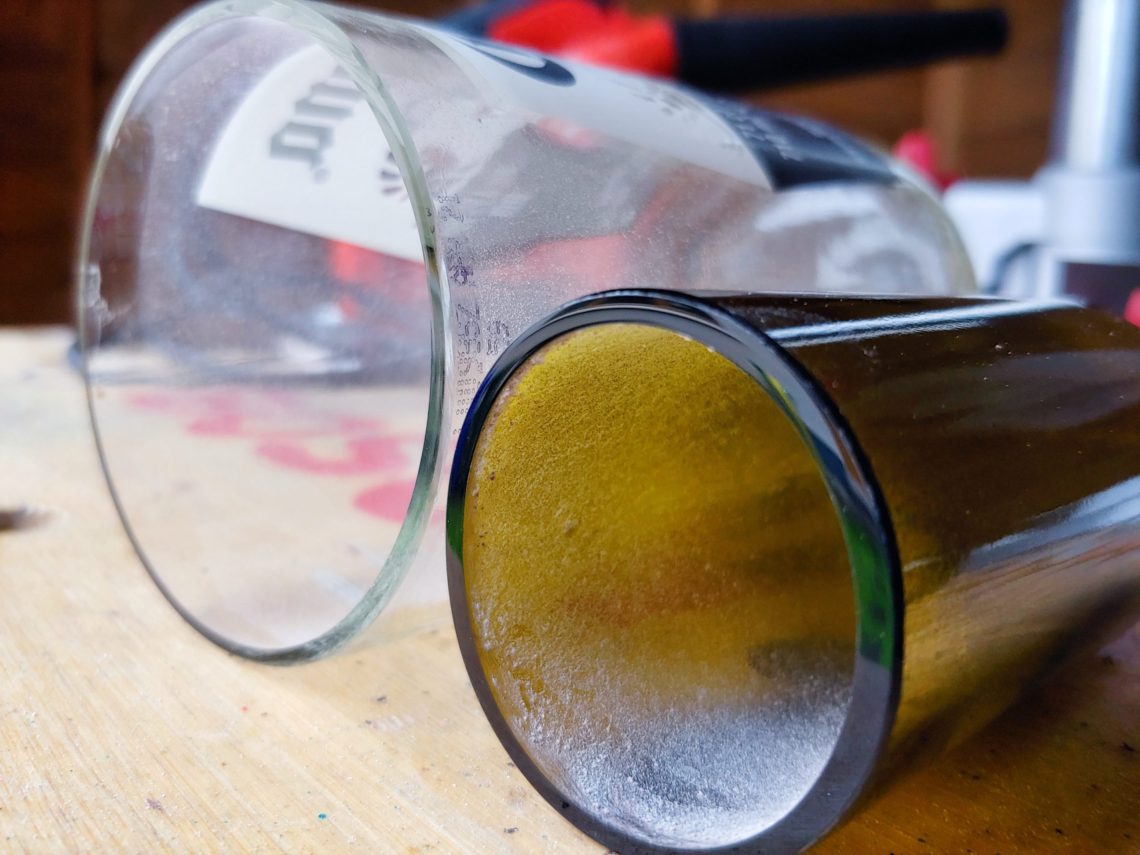
It was time to work on the inside edges. I installed a 1″ sanding drum with a 240 grit sleeve and started my work. Next, I used 400 and 600-grit sleeves. It was looking good but still needed some work. I also spotted a little imperfection in one place, and with the 600-grit sleeve, I smoothed it out.

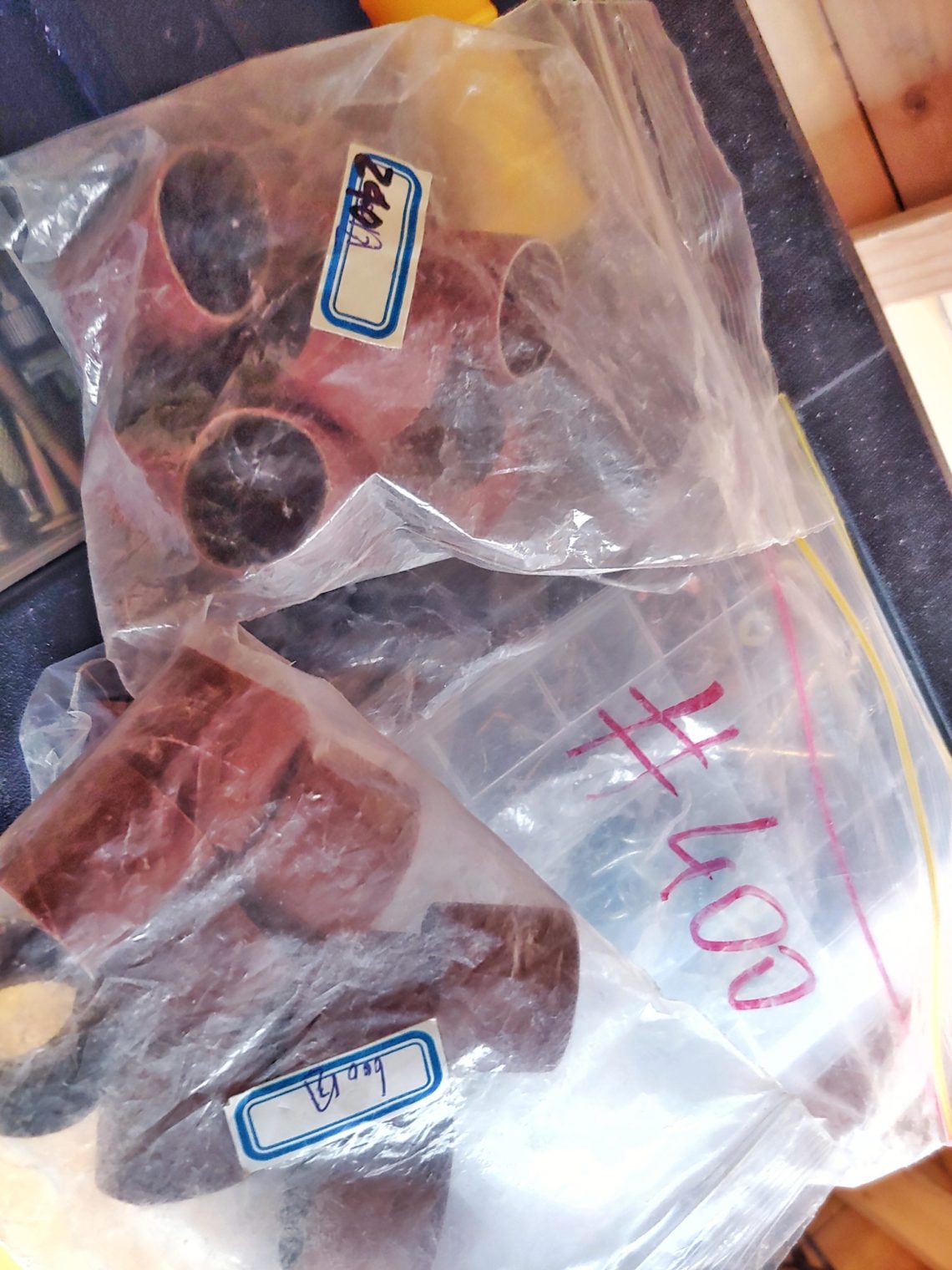
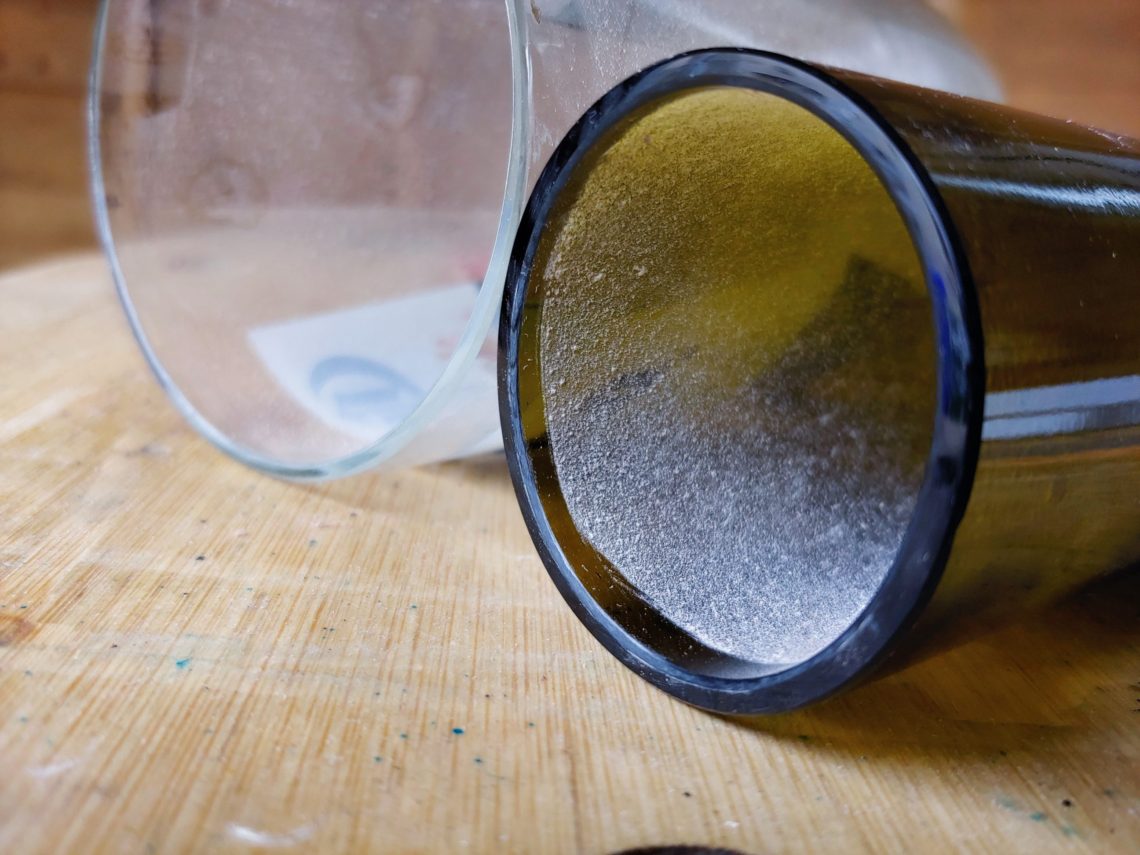
For the bigger glass, I used a 1500 grit ceramic sanding drum, but I skipped that for the smaller one. Next, I used a felt disc which was perfectly sized for the bigger glass as it entered the workpiece at ~45º angle. For the smaller glass, I used a felt cone. The polishing compound left a nice-looking surface, a little mat and it still needed some work.
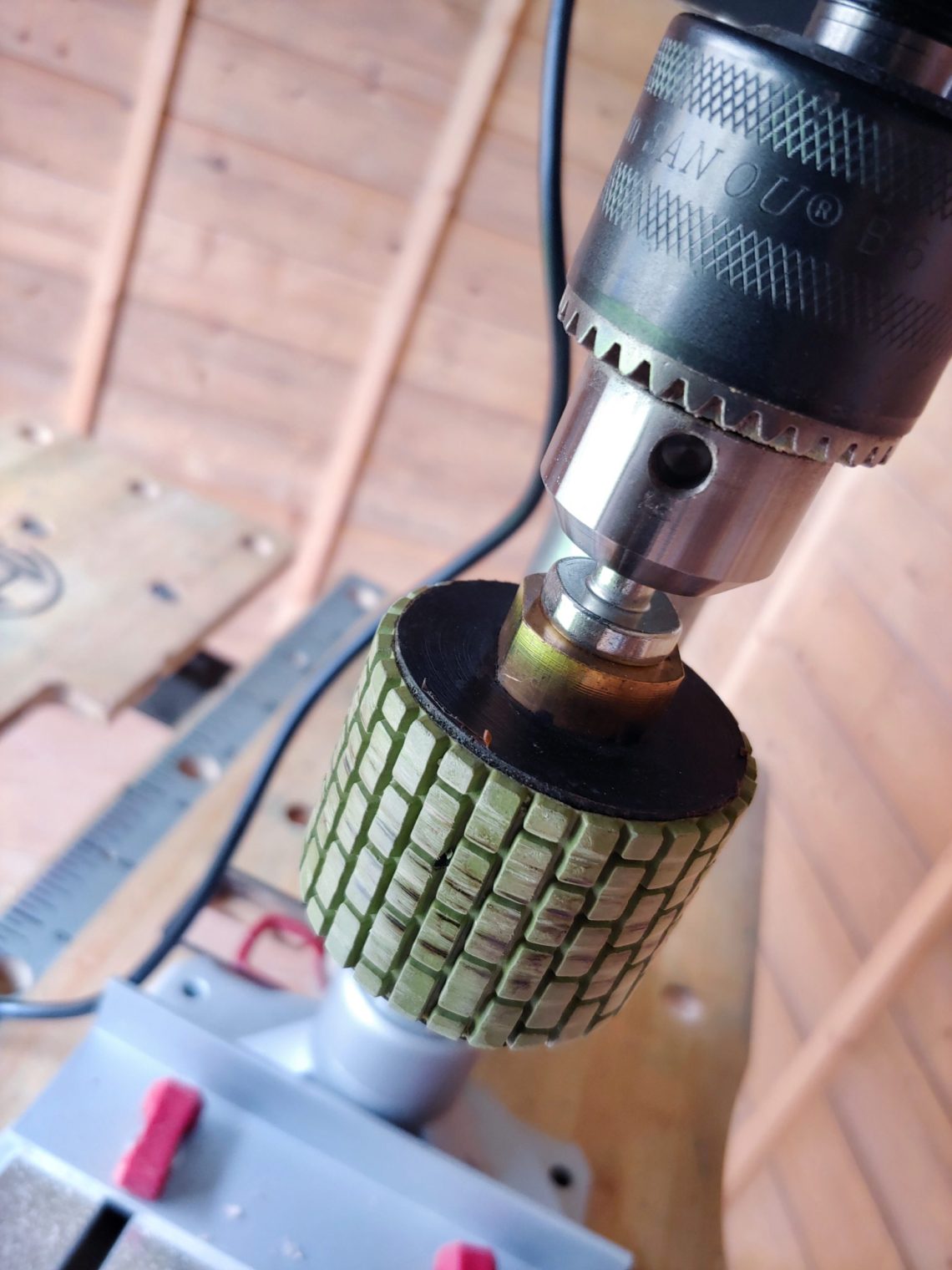

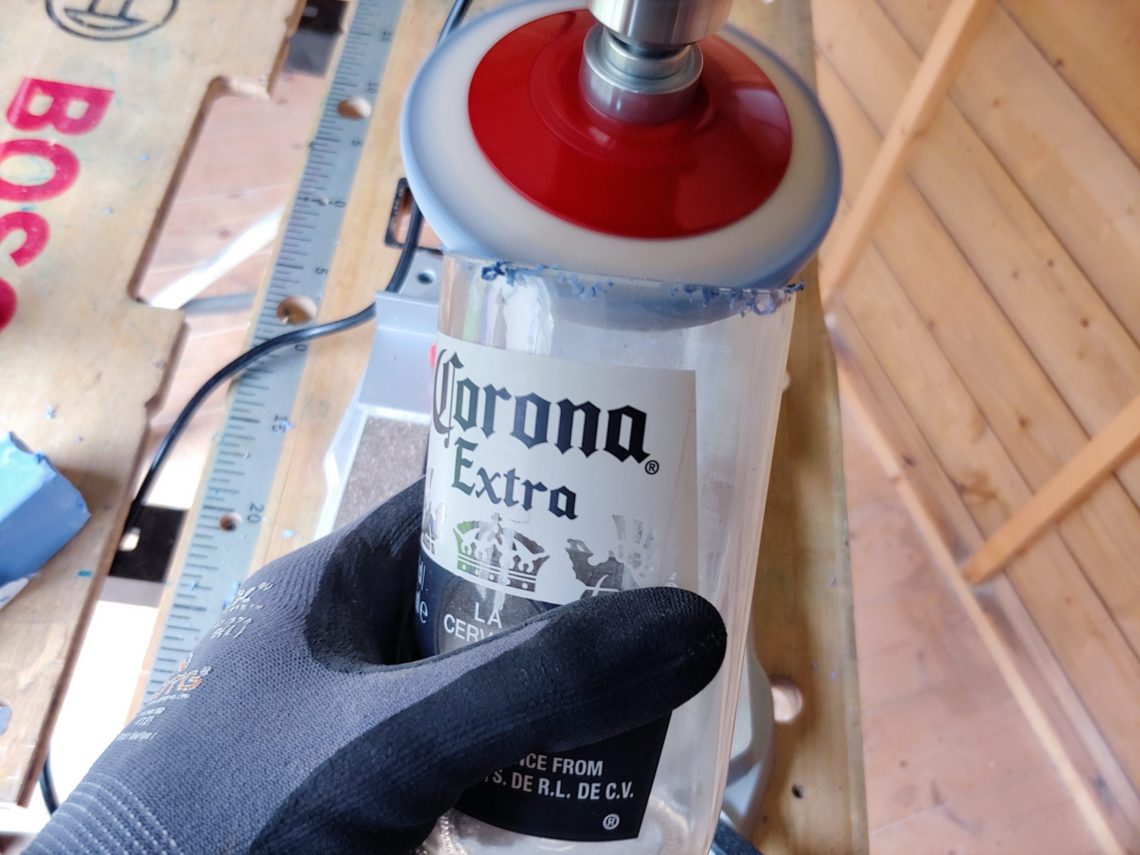
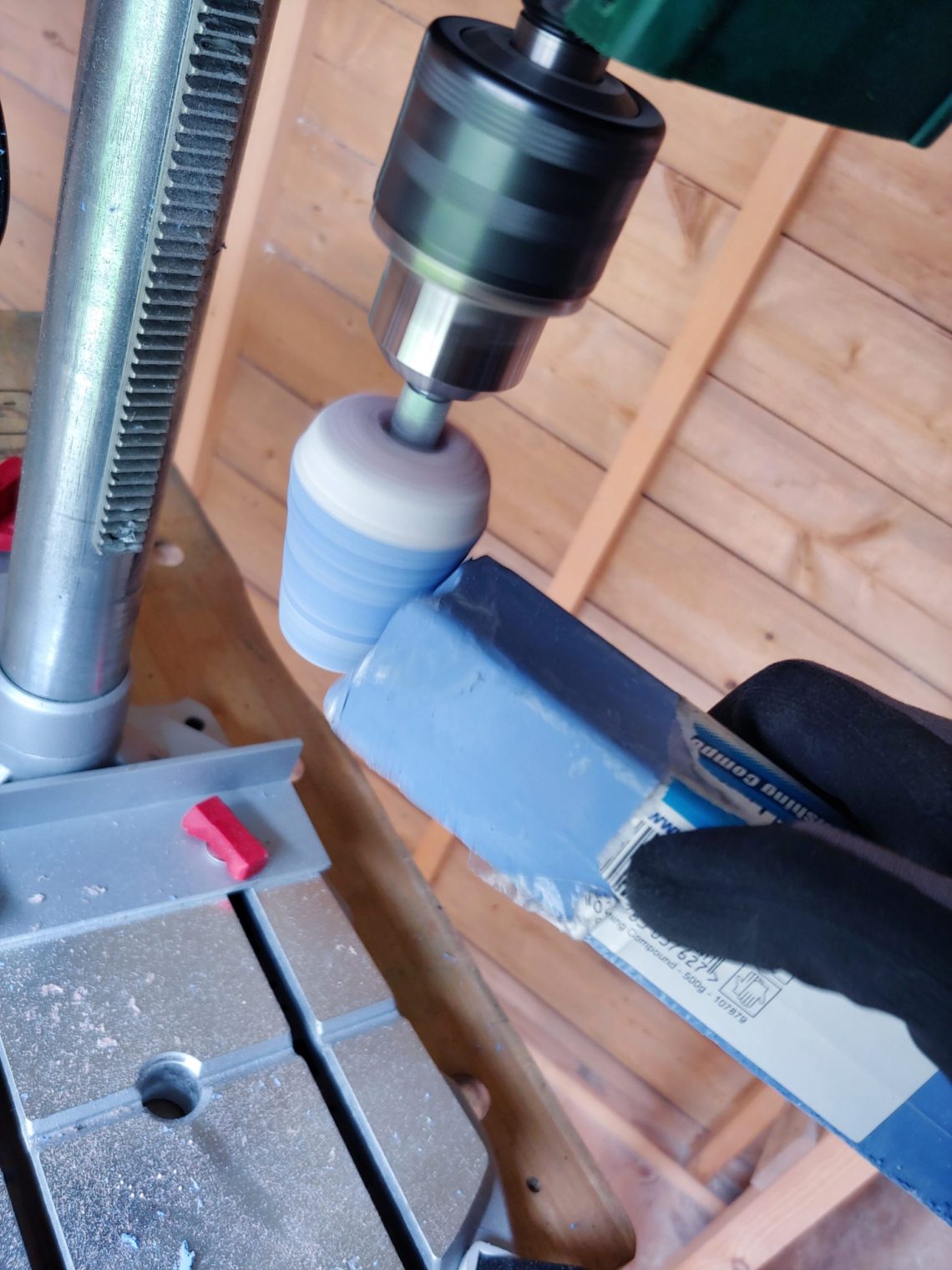
I used a super fine scratch remover to finish the glasses. It is always used with a different felt cone, specially kept separate from the blue polishing compound.
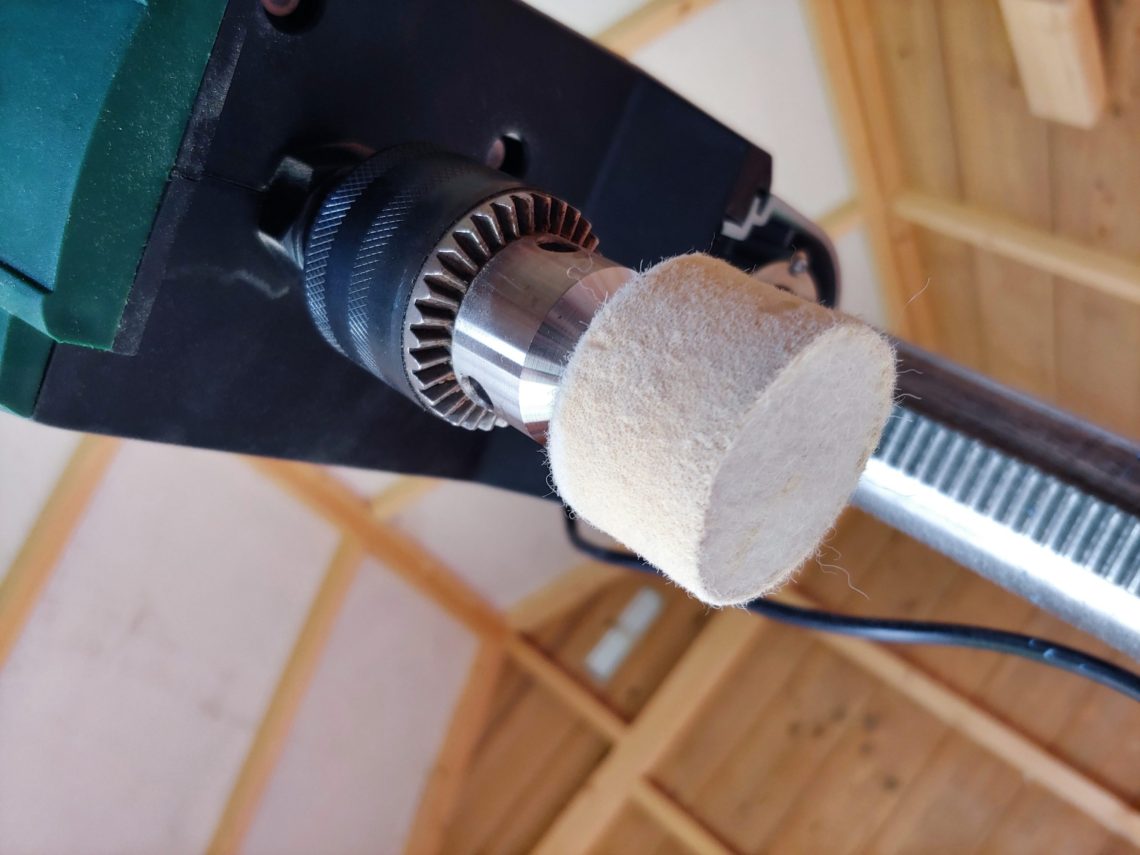
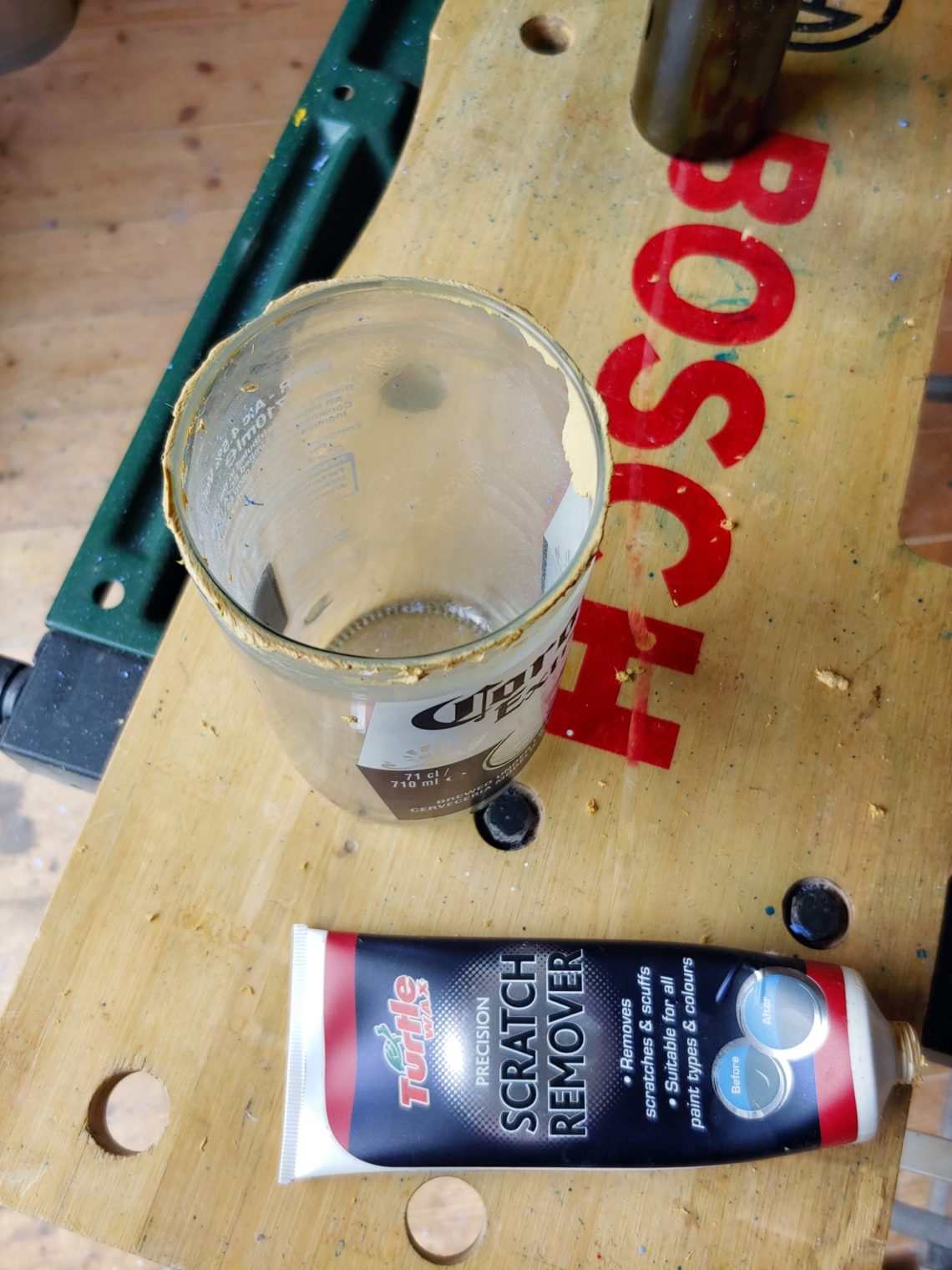

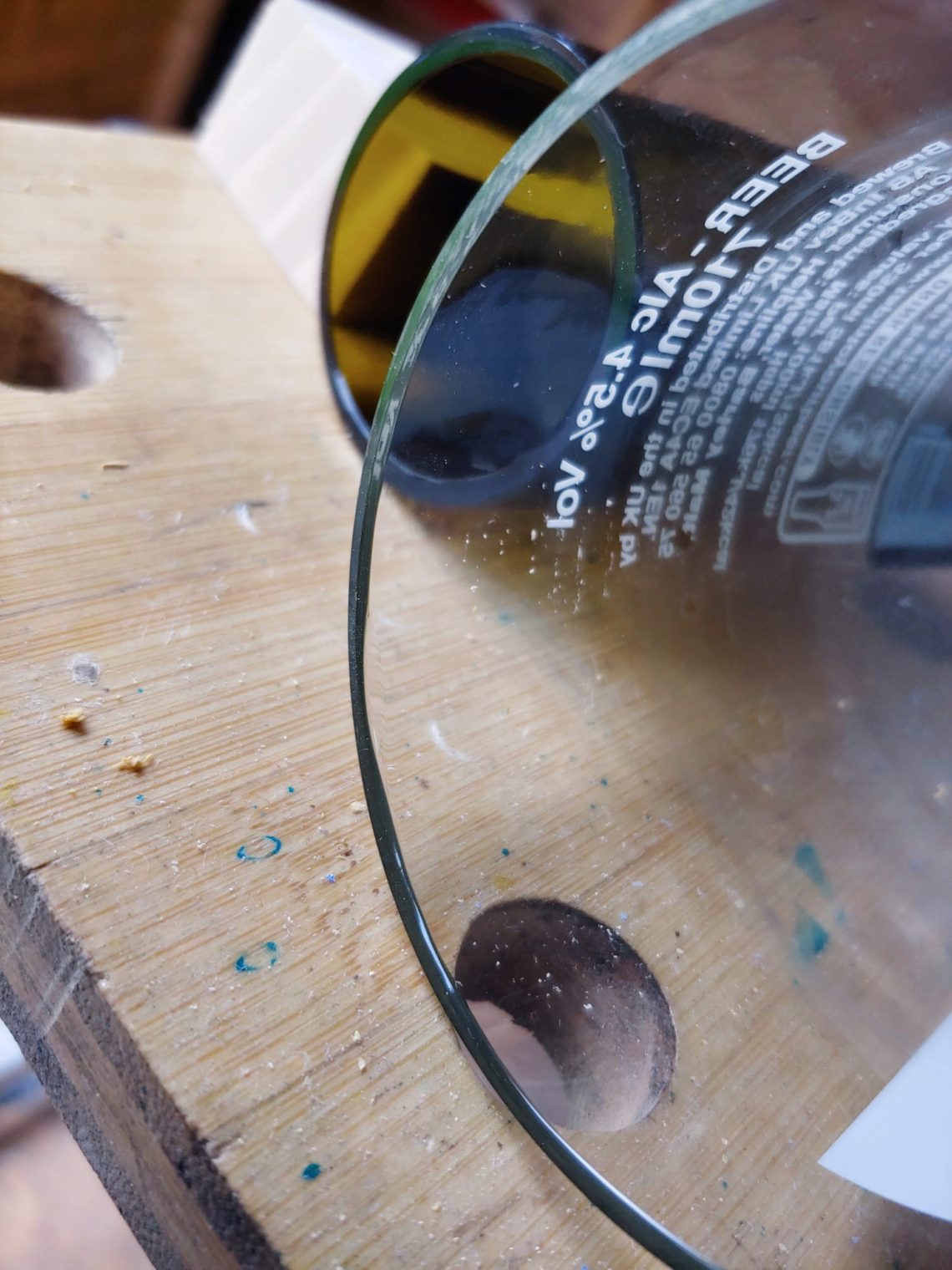
As I mentioned the clear glass had a little chip in one place, I had to remove some material, and thus I got a little thinner wall. It had to be done as it was unsafe for use, but the fix can be barely spotted. The next and last step I did was deep cleaning, all the chemicals were removed, and the glasses were thoroughly washed and dried.
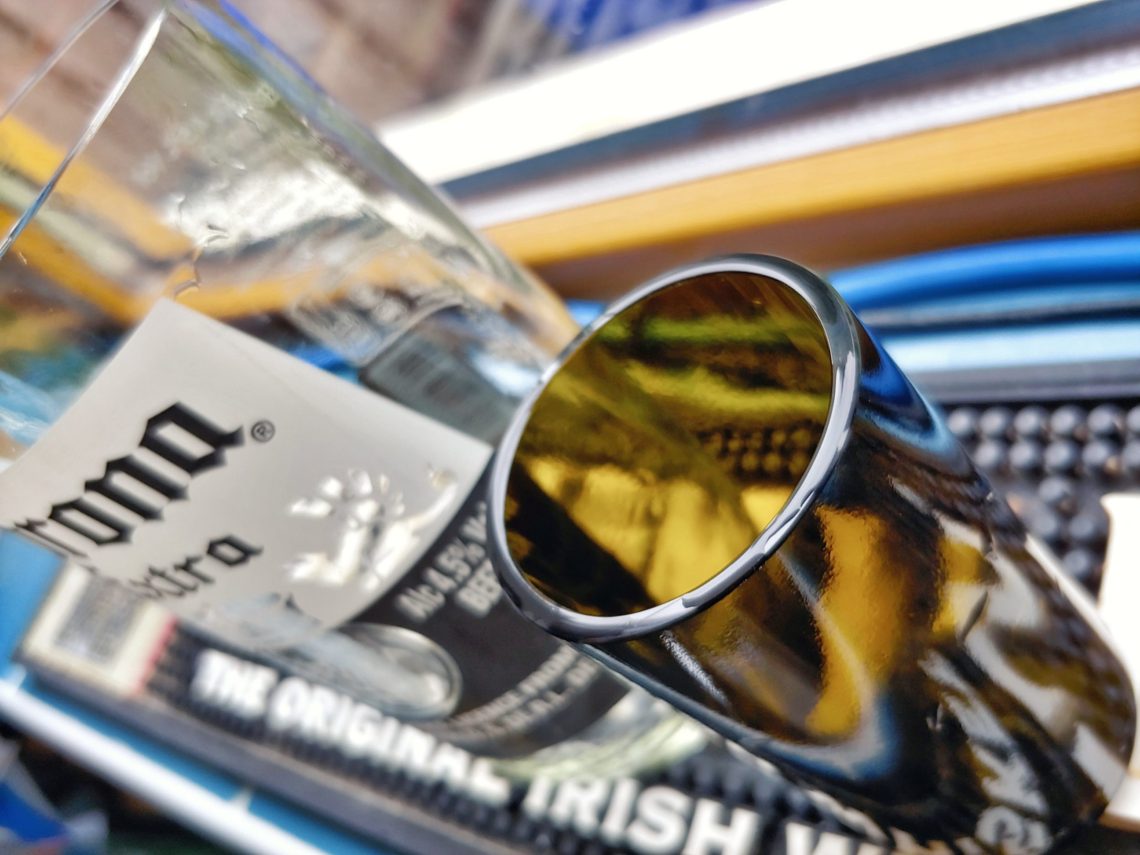
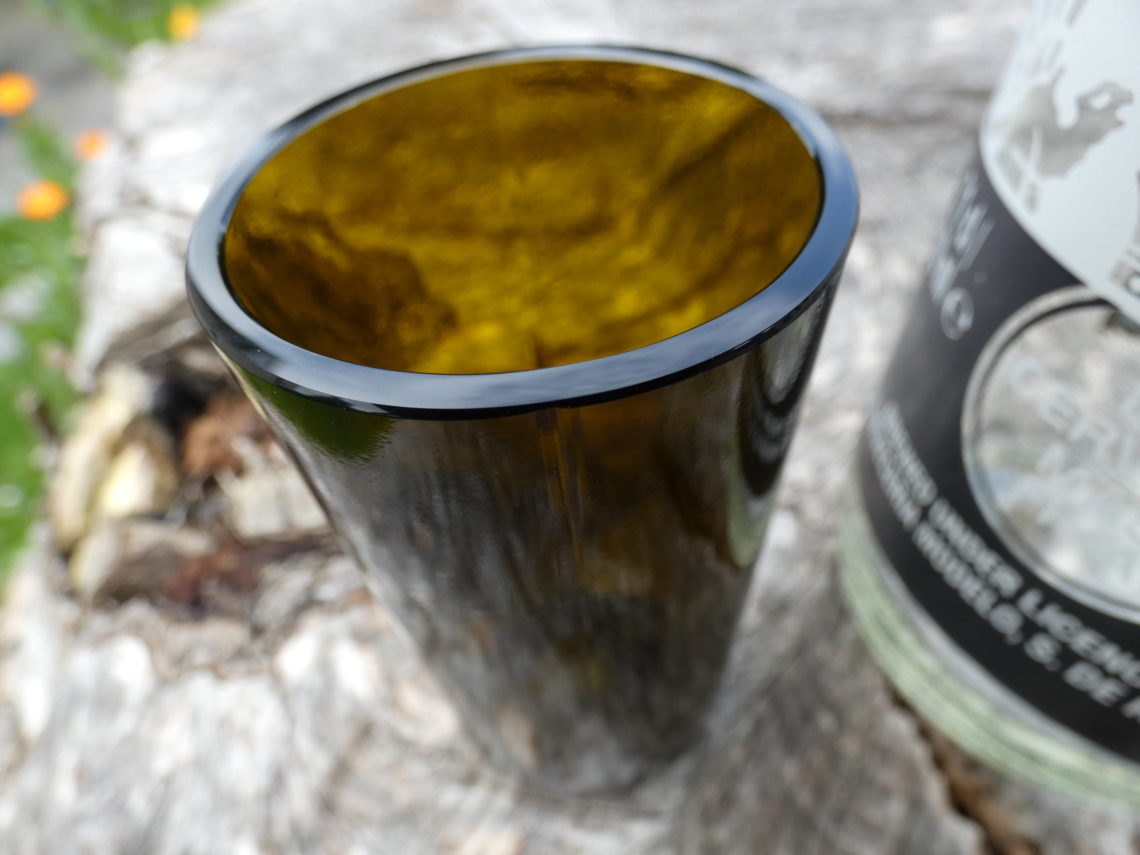



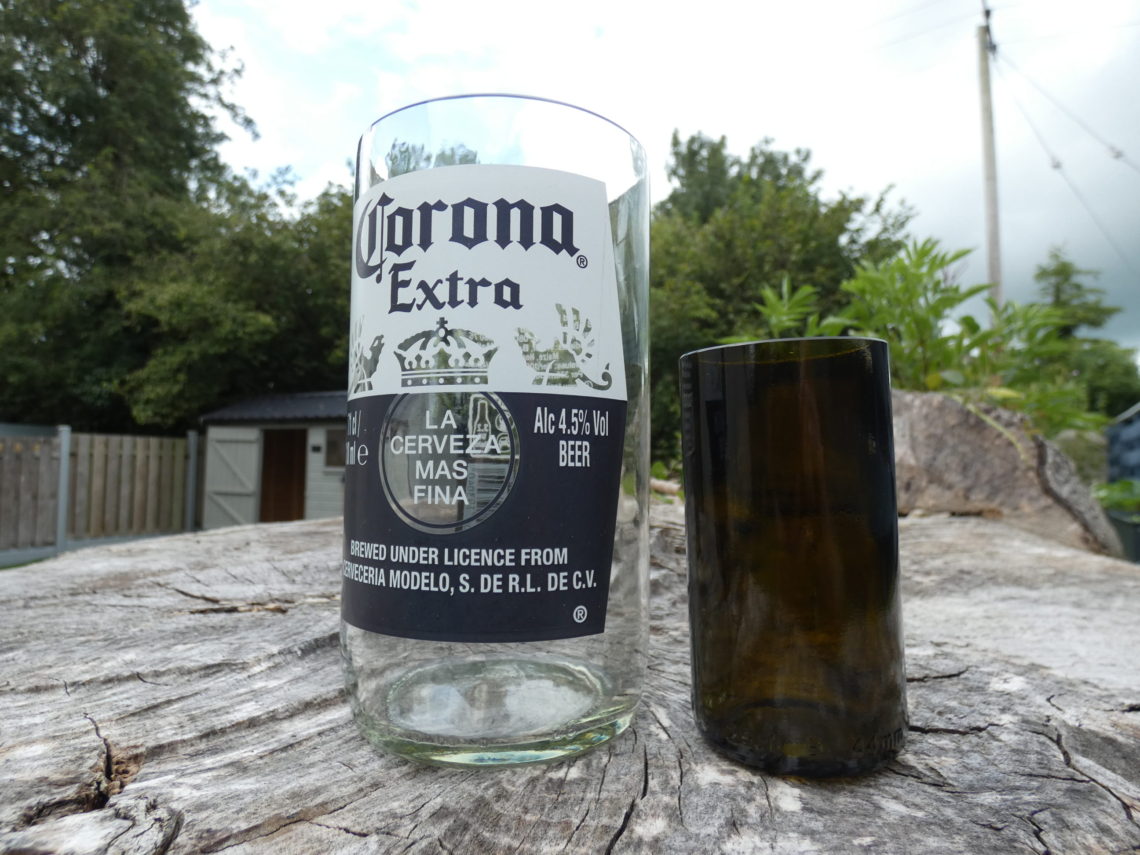
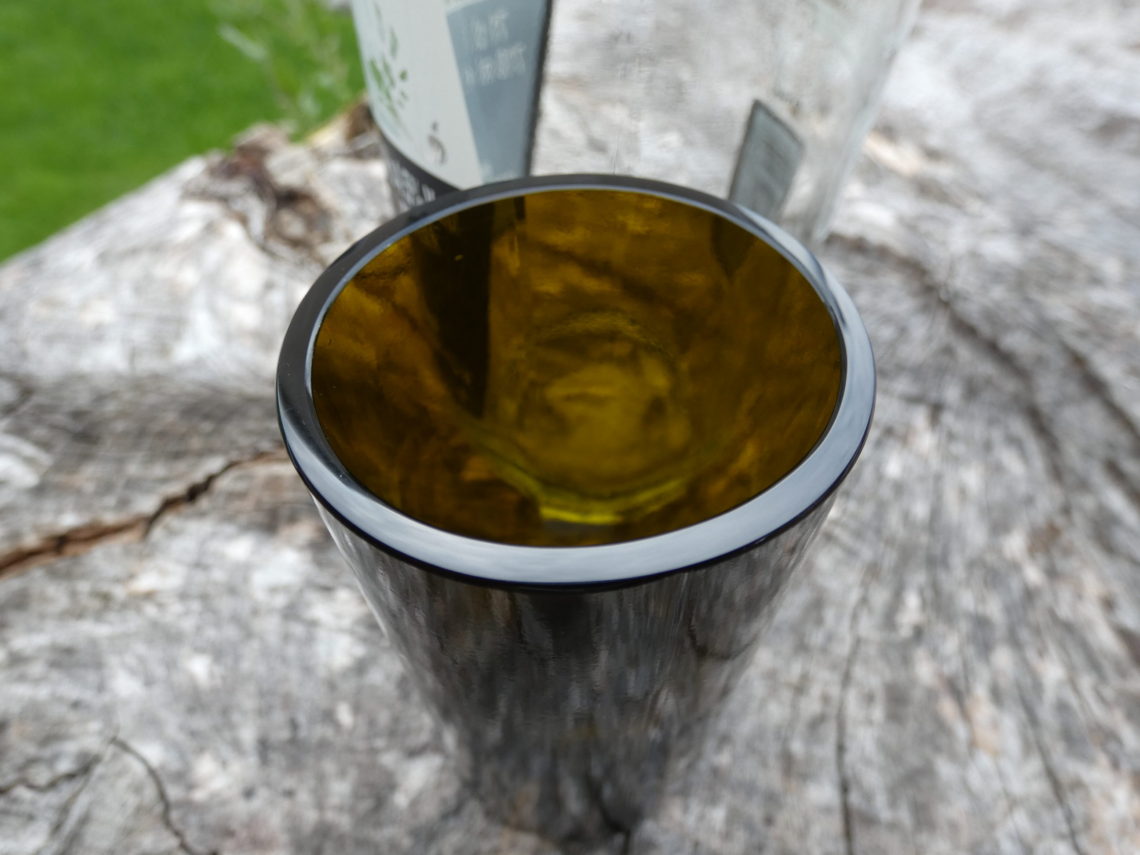
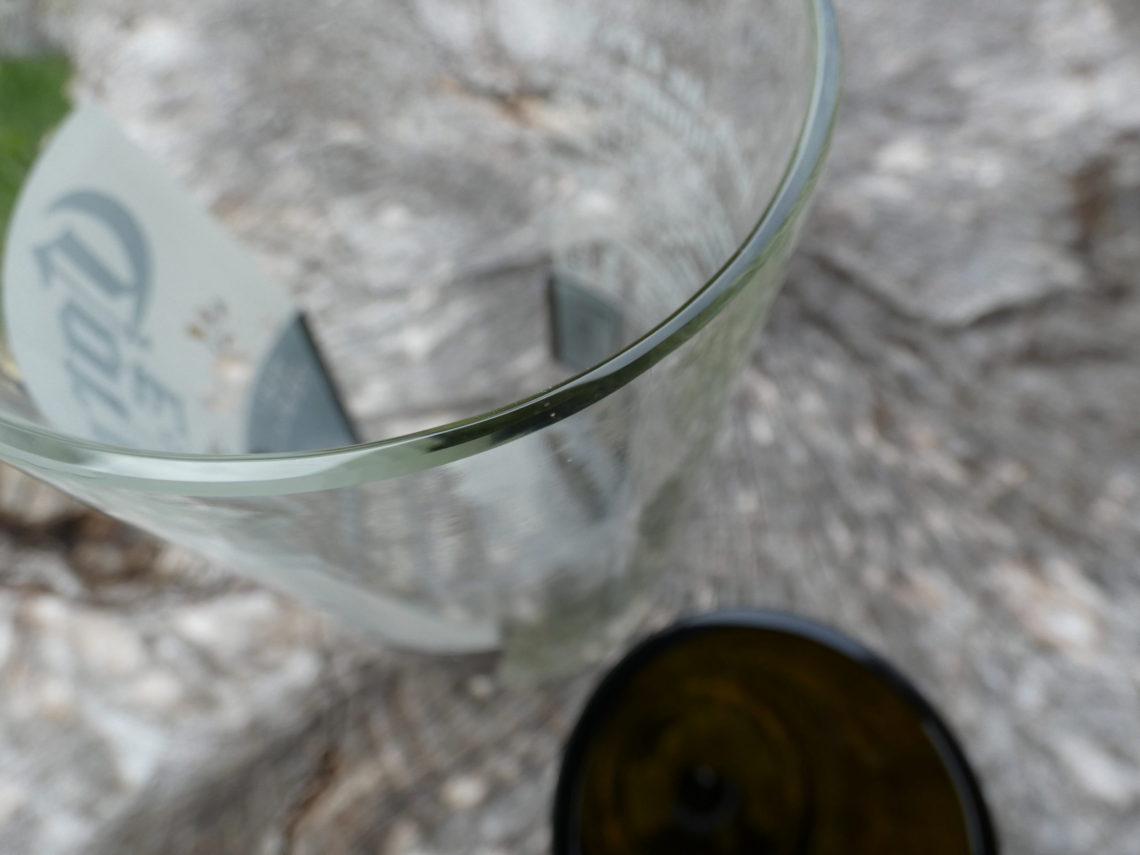
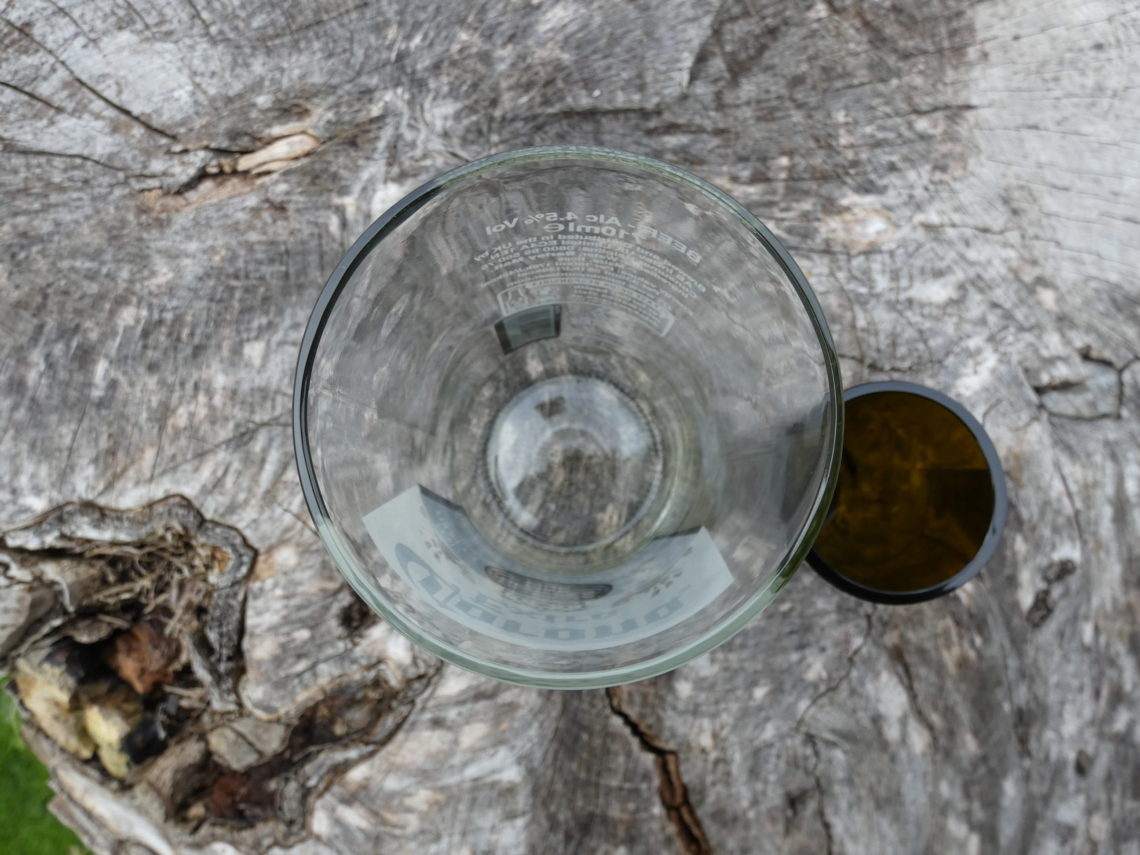
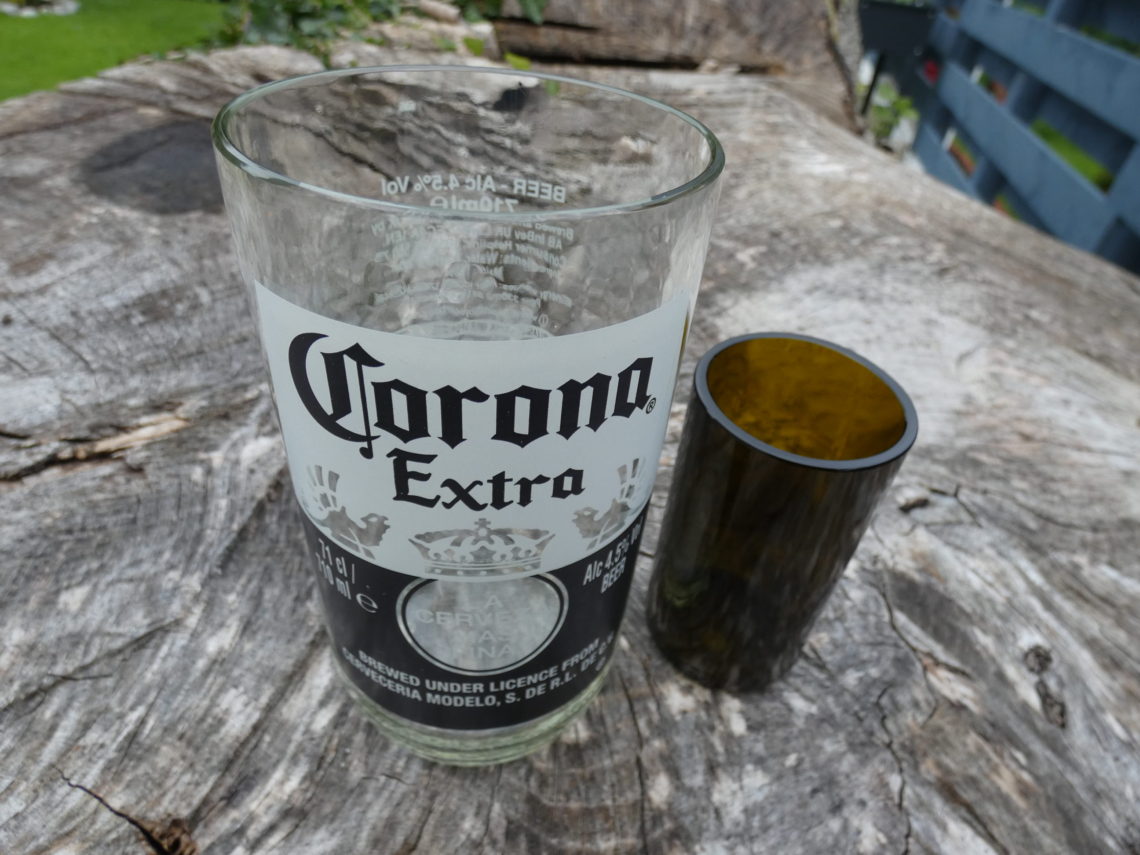

The bigger glass can be used for 500 ml drinks like beers or ciders. The smaller glass is perfect for liqueurs, bigger vodka shots any other spirits. They are beautifully finished, and all the edges are factory-like, super smooth and very professional. Also, capacities are perfectly sized for use with certain alcohols.


